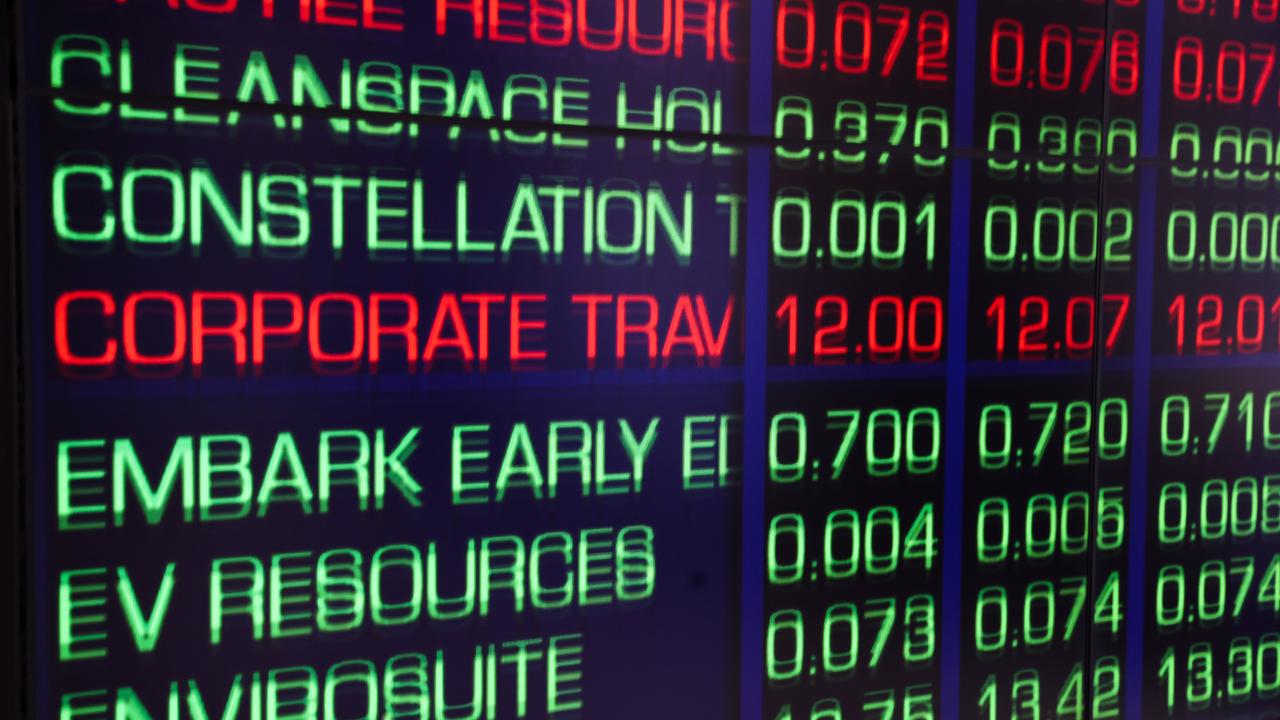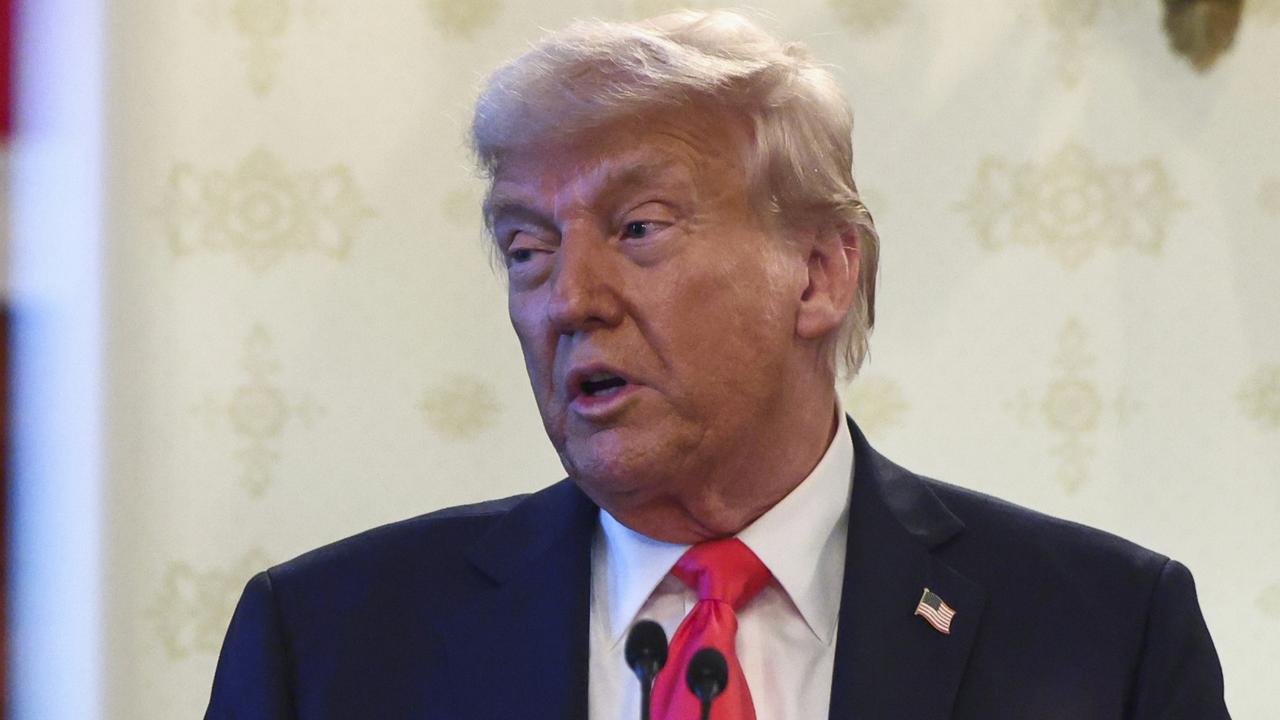Aussie dollar crashes back to earth as Westpac becomes first major lender to predict rate cut
After spiking earlier in the day, the Aussie dollar crashed back to earth after one of the major banks made a bold prediction for the future of interest rates.

The Australian dollar came crashing back to earth after Westpac became the first of the big four banks to predict the Reserve Bank would cut rates twice this year.
Westpac chief economist Bill Evans cited the weakening local economy in forecasting the cash rate to be cut 25 basis points in August and then again in November.
Earlier, the dollar jumped nearly half a cent in 10 minutes to 72.07 US cents on news the nation’s full-time employment rose in January.
But Mr Evans gave a sobering prediction on the state of jobs in Australia soon after, sending the dollar right back to 71.55 US cents.
He wrote in his report that Westpac had cut its GDP growth forecast for both this year and next from 2.6 per cent 2.2 per cent.
“With the slower growth profile we now expect to see the unemployment rate lift to 5.5 per cent by late 2019,” Mr Evans wrote.
“That makes a strong case for official rate cuts to cushion the downturn and, in turn, meet the RBA’s medium term objectives.”
RBA boss Philip Lowe changed his tune on the state of the Australian economy earlier this month, admitting its weakness had led him to hold a neutral view on the rates’ potential movements.
“It is possible that the economy is softer than we expect and that income and consumption growth disappoint,” he said at a speech to the National Press Club in Sydney.
“In the event of a sustained increased in the unemployment rate and a lack of further progress towards the inflation objective, lower interest rates might be appropriate at some point. We have the flexibility to do this if needed.”
If the rate is cut twice this year, as is being increasingly predicted, it would be lowered from its current record low of 1.5 to 1.0.
Earlier, the dollar strengthened against its US counterpart on the release of data outlining the jobless rate remained steady at 5.0 per cent in January.
Thursday’s data from the Australian Bureau of Statistics showed the full-time jobs boost knocked the seasonally adjusted underemployment rate down from 8.3 per cent to 8.1 per cent, while the participation rate increased by 0.1 percentage points to 65.7 per cent.
Westpac senior currency strategist Sean Callow said the Aussie dollar had benefited from three consecutive months of better than expected jobs figures.
“Jobs have continued to be created but the mix has tilted towards full-time over the past few months,” he told news.com.au.
Mr Callow said he currently held a high value estimate of 73 US cents for the Australian dollar based on strong commodity prices and interest rate differentials, but its value would be at the mercy of the RBA’s expected rate cut.
A$ understandably likes the 3rd straight upside surprise on Aust jobs. Our AUD/USD fair value estimate is in high 0.73s but RBA easing pricing is likely to be a persistent drag on the Aussie #ausbiz pic.twitter.com/LP4jKFMC28
— Sean Callow (@seandcallow) February 21, 2019
AMP Capital chief economist Shane Oliver tweeted the job figures will strengthen the case for it remaining at its current record low of 1.5.
“The labour market remains a strong point for the Aust economy,” he said. “(This) will keep RBA on hold for a while yet.”
Mr Oliver has been vocal on his prediction the next move in the rate will be down, saying it will likely be cut twice in the second half of this year.
Aust January jobs +39K/+2.2%yoy, with a bounce back in full time jobs of +65K. Unemployment flat at 5% (as participation up). The labour market remains a strong point for the Aust economy! Will keep RBA on hold for a while yet. (We don't expect a cut until second half)...#ausecon pic.twitter.com/13air6zHCp
— Shane Oliver (@ShaneOliverAMP) February 21, 2019
The ABS data matched consensus expectations and showed a net increase of 39,100 persons with work, including 65,400 more people in full-time employment and 26,300 fewer people in part-time employment.
BIS Oxford Economics analyst Sarah Hunter said the result was positive, especially the lift in full-time work, but she remains cautious about the nation’s economic outlook.
“Strong employment growth will help to support consumer spending and therefore GDP growth, but households continue to face weak growth in wages and other sources of income,” she said.
“Residential construction is also set to become a bigger drag on momentum as we move through 2019.”
Lacklustre December quarter wage data on Wednesday tested the RBA’s narrative on the health of the economy, with analysts pinning hopes on an increase in jobs to stimulate spending amid a housing downturn.
Ms Hunter said a steady unemployment rate would likely see the cash rate kept on hold this year.
“Growth will be strong enough to not require a cut, but not strong enough to warrant a rate rise until the end of 2020 at the earliest,” Ms Hunter said.
In seasonally adjusted terms, the largest increase in employment in January was in New South Wales, a 47,200 increase in jobs, followed by Victoria, up 2200, and Western Australia, up 800.
The largest decrease was in Queensland, down 19,900 jobs, followed by South Australia, down 4500.
The seasonally adjusted underemployment rate decreased in all states.
The ABS said January’s net movement was underpinned by about 300,000 people entering and leaving employment.
— With AAP
— Continue the conversation on Twitter @James_P_Hall or james.hall1@news.com.au



